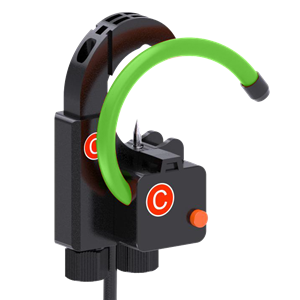-
2803-2023
What are the similarities and differences of voltage and current transformers?
What are the similarities and differences of voltage and current transformers? The current transformer is called CT and the voltage transformer is called PT. What they have in common is that they work on the principle of electromagnetic induction, which is used to monitor the electrical circuit: the current of the electrical circuit is monitored through CT, which is the current source of secondary instrument and protection
-
2703-2023
What are the types of voltage transformers?
Voltage transformer - according to the principle of electromagnetic induction type and capacitance type two categories. According to the purpose, voltage transformers are divided into two categories: measurement and protection.
-
2603-2023
What kinds of connections do voltage transformers have?
A: The main functions of the transformer are: ① used to insulate the secondary equipment such as instruments and relays from the main circuit. ② It is used to expand the application range of instruments, electrical appliances and other secondary equipment. Voltage transformer installation: ① pay attention to the secondary side do not short circuit. ② One end of the secondary side must be grounded. ③ Pay attention to the installation of the terminal polarity current transformer: ① Do not open the secondary side. ② One end of the secondary side must be grounded. ③ Pay attention to terminal polarity
-
2503-2023
Why does the voltage transformer have several outputs
The ring indicates the number of primary and secondary windings of the voltage transformer. One primary winding is removed, and the rest are all secondary windings.
-
2003-2023
Technical application characteristics of Encapsulated Transformer
Good gas performance, low partial discharge value: in the transformer insulation structure, how many local insulation weaknesses, it will first occur under the action of the electric field discharge, but not immediately the formation of the entire insulation penetration breakdown, it may occur on the surface of the insulator or internal, that is, partial discharge.
-
1803-2023
Encapsulated Transformer
-
1703-2023
The design of switching power transformer
The design of switching power transformer is divided into three aspects: reduce the loss of switching transformer as far as possible; Minimize leakage of switching transformer; Try to suppress the audio noise of the switching transformer.
-
1503-2023
Telecom Transformer
Telecom Transformer products are widely used in cable modem, network card, hub, xDSL broadband communication equipment, switch, optical transceiver, router, embedded system, VoIP and other network communication equipment, data communication equipment, photoelectric transmission equipment, access network equipment, power line Internet equipment, voice equipment, etc
-
0803-2023
The function of audio transformer
The audio transformer can realize voltage-converter conversion just like the power transformer, and can also realize audio signal coupling. There are four main functions of audio transformer:Output transformer: used in audio equipment and playback equipment, impedance conversion in the circuit.
-
0703-2023
Isolation transformer
Isolation transformer belongs to the safety power supply, generally used for machine repair, maintenance, protection, lightning protection, filtering function. The principle of isolation transformer is the same as that of ordinary transformer. They all use the principle of electromagnetic induction. Isolation transformers generally (but not all) refer to 1:1 transformers.




